#mobile application performance testing
Explore tagged Tumblr posts
Text
#automated performance testing#automation testing company#mobile app automation testing#mobile application performance testing#performance test automation#software automation testing
0 notes
Text
#Performance Testing#Security Testing#Load Testing#Software Optimization#Application Security#QA Performance#Cybersecurity Testing#Stress Testing#Mobile App Testing#Android Testing#iOS App Testing#Cross-Device Testing#Mobile QA#Mobile Automation Testing#App Performance Testing#Real Device Testing#Functional Testing#Software QA#Feature Validation#System Testing#Manual Testing#Automated Functional Testing#End-to-End Testing#Black Box Testing#ETL Testing#Data Validation#Data Warehouse Testing#BI Testing#Database QA#Data Quality Checks
0 notes
Text
Testing Mobile Health (mHealth) Applications for Accessibility and Usability
The mobile health (mHealth) industry is revolutionizing how patients and providers interact with healthcare. From chronic disease management apps to remote patient monitoring platforms, mHealth applications are improving healthcare delivery access, efficiency, and personalization. However, ensuring that these apps are accessible and usable is vital for achieving positive health outcomes and user adoption—especially for individuals with disabilities or limited tech proficiency.

This article explores how application testing, especially accessibility testing and usability testing, plays a crucial role in the success of mHealth apps. It also examines how these tests integrate into broader mobile testing and healthcare device testing strategies to ensure compliance, safety, and user satisfaction.
Why Accessibility and Usability Matter in mHealth
Accessibility and usability are often conflated, but they address different aspects of user interaction.
Accessibility testing ensures that people with disabilities—such as visual, auditory, cognitive, or motor impairments—can effectively use an application. In the healthcare context, this is critical as patients with disabilities are among the primary users of mHealth apps.
Usability testing evaluates how easy and efficient an app is to use. This includes how intuitive the user interface is, how clear the navigation and content are, and whether users can accomplish their goals without confusion or error.
For mHealth applications, which may involve sensitive data, urgent care decisions, or medication management, both accessibility and usability are essential. A confusing interface or inaccessible features can lead to non-compliance, data entry errors, or even health risks.
Key Challenges in Testing mHealth Applications
Testing mobile health applications presents unique challenges that go beyond conventional mobile app testing:
Compliance with Regulations mHealth apps must adhere to regulatory requirements like HIPAA (Health Insurance Portability and Accountability Act) in the U.S., GDPR in Europe, and accessibility standards such as WCAG (Web Content Accessibility Guidelines). Testing must ensure full compliance to avoid legal and safety issues.
Device and Platform Fragmentation With a wide range of mobile devices and operating systems in use, mobile testing must include thorough cross-platform compatibility checks.
Integration with Healthcare Devices Some mHealth apps connect with external devices such as glucose monitors, blood pressure cuffs, or smartwatches. Healthcare device testing must be part of the QA process to ensure accurate data transmission and processing.
Real-World Usage Scenarios mHealth apps are often used in varied environments—from homes to hospitals. Tests must simulate different network conditions, screen sizes, and user interactions.
Essential Testing Types for mHealth Apps
1. Accessibility Testing
Accessibility testing ensures the app is usable by people with disabilities. This includes:
Screen reader compatibility (e.g., Voiceover, Talkback)
Colour contrast and font size checks
Keyboard navigation for users with motor impairments
Captions for audio and video content
Alternative text for images
Automated tools like Axe or WAVE can assist, but manual testing with assistive technologies remains critical.
2. Usability Testing
Usability testing involves real users interacting with the app to uncover pain points. It helps answer questions like:
Are users able to find information easily?
Can patients’ complete tasks like logging symptoms or scheduling appointments without guidance?
Is medical terminology explained clearly?
Testing sessions can include surveys, interviews, and screen recordings to collect qualitative and quantitative feedback.
3. Functional Testing
This verifies that the app’s core features work as intended—such as logging in, syncing with devices, sending notifications, or storing data securely.
4. Compatibility Testing
To account for device fragmentation, apps should be tested across:
iOS and Android versions
Various screen sizes and resolutions
Different network conditions (3G, 4G, Wi-Fi)
5. Performance Testing
Since mHealth apps often handle real-time data, performance testing ensures fast load times, stable connections, and smooth data syncing.
6. Security Testing
Apps handling health data must implement robust encryption, secure authentication, and data privacy measures. Security testing evaluates these protections and ensures HIPAA/GDPR compliance.
Designing Effective Healthcare Test Cases
To ensure coverage of all crucial aspects, healthcare test cases should be designed to validate:
Accurate retrieval and display of medical history
Secure communication with healthcare professionals
Correct functioning of reminders and alerts
Accessibility features for users with impairments
Device integration and data syncing accuracy
Error handling in case of device failures or poor connectivity
Each test case should include a clear description, expected outcome, and compliance criteria (e.g., “User with visual impairment can book an appointment using screen reader”).
Best Practices for mHealth Application Testing
Start Early: Integrate accessibility and usability testing from the design phase to avoid costly redesigns later.
Involve End Users: Conduct usability tests with patients and healthcare providers to gather real-world feedback.
Adopt Agile Testing: Continuous testing during development ensures faster iterations and better quality.
Use Automation Wisely: Automate repetitive functional tests, but rely on manual testing for user experience and accessibility.
Stay Updated with Regulations: Monitor updates in healthcare and accessibility compliance standards to stay ahead.
Conclusion
Testing mHealth applications for accessibility and usability is not just a technical requirement—it’s a healthcare imperative. By integrating comprehensive application testing, including accessibility testing, mobile testing, and healthcare device testing, developers can create apps that are safe, inclusive, and truly impactful.
The ultimate goal is to empower all users—regardless of ability or technical expertise—to take control of their health through intuitive and accessible mobile solutions.
#accessibility testing#healthcare device testing#mobile testing#application testing#Performance Testing#Functional Testing
0 notes
Text
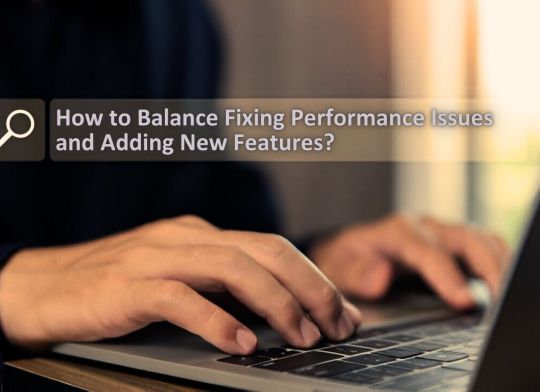
How to Balance Fixing Performance Issues and Adding New Features in Web Applications?
In today’s digital landscape, web applications are essential for business operations, marketing, and consumer involvement. As organizations expand and consumer expectations rise, development teams are frequently confronted with the difficult task of balancing two key priorities: addressing performance issues and introducing new features.
While boosting performance improves the user experience and increases efficiency, new features are required to remain competitive and meet market demands. Prioritizing one over the other, on the other hand, might have negative consequences—performance concerns can lead to a poor user experience while failing to innovate can result in a competitive disadvantage.
This blog delves into how to balance improving performance and introducing new features to web apps, allowing firms to satisfy technical and market demands efficiently.
Why Balancing Performance and New Features Is Crucial
A web application‘s success depends on both its performance and its features. However, relying entirely on one might result in imbalances that impair both user happiness and business progress.
Performance:Performance is an important component that directly influences user retention and happiness. Users can become frustrated and leave if the application has slow loading times, crashes, or problems. Ensuring that your web application runs smoothly is essential since 53% of mobile consumers would quit a site that takes more than three seconds to load.
New Features:On the other hand, constantly adding new features keeps users interested and promotes your company as innovative. New features generate growth by attracting new consumers and retaining existing ones who want to experience the most recent changes.
The dilemma is deciding when to prioritize bug fixes over new feature development. A poor balance can harm both performance and innovation, resulting in a subpar user experience and stagnation.
Common Performance Issues in Web Applications
Before balancing performance and features, it’s important to understand the common performance issues that web applications face:
Slow Load Times: Slow pages lead to higher bounce rates and lost revenue.
Server Downtime: Frequent server outages impact accessibility and trust.
Poor Mobile Optimization: A significant portion of web traffic comes from mobile devices and apps that aren’t optimized for mobile fail to reach their potential.
Security Vulnerabilities: Data breaches and security flaws harm credibility and user trust.
Bugs and Glitches: Software bugs lead to poor user experiences, especially if they cause the app to crash or become unresponsive.
Strategic Approaches to Fixing Performance Issues
When performance issues develop, they must be handled immediately to guarantee that the online application functions properly. Here are techniques for improving performance without delaying new feature development:
Prioritize Critical Issues:Tackle performance issues that have the most significant impact first, such as slow loading times or security vulnerabilities. Use analytics to identify bottlenecks and determine which areas require urgent attention.
Use a Continuous Improvement Process:Continuously monitor and optimize the application’s performance. With tools like Google PageSpeed Insights, you can track performance metrics and make incremental improvements without major overhauls.
Optimize Database Queries:Slow database queries are one of the leading causes of web app performance issues. Optimize queries and ensure that the database is indexed properly for faster access and retrieval of data.
Reduce HTTP Requests:The more requests a page makes to the server, the slower it loads. Minimize requests by reducing file sizes, combining CSS and JavaScript files, and utilizing caching.
5. Leverage Caching and CDNs: Use caching strategies and Content Delivery Networks (CDNs) to deliver content quickly to users by storing files in multiple locations globally.
Why Adding New Features is Essential for Growth
In the rapidly changing digital environment, businesses must continually innovate to stay relevant. Adding new features is key to maintaining a competitive edge and enhancing user engagement. Here’s why:
User Expectations:Today’s consumers expect personalized experiences and constant innovation. Failure to add new features can lead to customer churn, as users may feel your web application no longer meets their needs.
Market Differentiation:Introducing new features allows your application to stand out in the marketplace. Unique functionalities can set your app apart from competitors, attracting new users and increasing customer loyalty.
Increased Revenue Opportunities:New features can lead to additional revenue streams. For example, adding premium features or new integrations can boost the app’s value and lead to increased sales or subscription rates.
4. Feedback-Driven Innovation: New features are often driven by user feedback. By continuously developing and adding features, you create a feedback loop that improves the overall user experience and fosters customer satisfaction.
Read More: https://8techlabs.com/how-to-balance-fixing-performance-issues-and-adding-new-features-in-web-applications-to-meet-market-demands-and-enhance-user-experience/
#8 Tech Labs#custom software development#custom software development agency#custom software development company#software development company#mobile app development software#bespoke software development company#bespoke software development#nearshore development#software development services#software development#Website performance testing tools#Speed optimization for web apps#Mobile-first web app optimization#Code minification and lazy loading#Database indexing and query optimization#Agile vs Waterfall in feature development#Feature flagging in web development#CI/CD pipelines for web applications#API performance optimization#Serverless computing for better performance#Core Web Vitals optimization techniques#First Contentful Paint (FCP) improvement#Reducing Time to First Byte (TTFB)#Impact of site speed on conversion rates#How to reduce JavaScript execution time#Web application performance optimization#Fixing performance issues in web apps#Web app performance vs new features#Website speed optimization for better UX
0 notes
Text
How AI is Shaping the Future of Web Automation Testing
Introduction:
Briefly introduce the role of AI in transforming industries.
Highlight its emerging impact on web automation testing.
Enhancing Test Automation Efficiency
Discuss how AI optimizes test case generation and execution.
Mention AI-powered tools for smart test script creation.
Self-Healing Test Scripts
Explain how AI helps maintain test scripts by dynamically adapting to UI changes.
Reduce the need for manual script updates.
Advanced Defect Detection
Highlight AI’s ability to identify patterns and anomalies.
Leverage predictive analytics for proactive bug fixing.
Improved Test Coverage with AI
Discuss how AI ensures comprehensive test coverage.
Utilize machine learning to prioritize high-risk areas for testing.
Future of Web Testing with AI
Explore emerging trends like autonomous testing and AI-driven test analytics.
Discuss potential integration of AI with DevOps.
Conclusion:
Summarize the advantages of AI in web testing.
Encourage embracing AI to stay competitive in QA.
#web automation testing#web ui testing#ui automation testing#web api test tool#web application testing#web app performance testing#mobile app testing#app testing#mobile application testing#mobile automation testing tools#mobile ui testing tools#api test automation
0 notes
Text
Revolutionizing Application Testing in Agile Environments: Strategies for Success
In today's fast-paced digital landscape, traditional application testing methods often struggle to keep up with rapid development cycles. As businesses strive for quicker releases and continuous updates, the need for efficient and effective testing strategies has never been more critical. Enter the world of agile testing, where innovative approaches are transforming how we ensure software quality and drive innovation.
Agile testing is not merely about executing tests; it's about seamlessly integrating validation processes into the development workflow. By embracing agile methodologies, organizations can leverage cutting-edge techniques to enhance their software testing practices and deliver superior products to market faster than ever before.
key strategies for optimizing application testing in agile environments:
Embrace the "Shift Left" Approach
The "Shift Left" philosophy is fundamental to agile testing, emphasizing the importance of early application testing in the development process. Unlike traditional waterfall models, where testing occurs at the end, agile encourages validation from the outset. This approach incorporates unit testing and functional testing to ensure each component is thoroughly validated during development.
By integrating validation testing early, teams can significantly reduce defect inflow in the final product. This proactive strategy not only saves time but also minimizes costs associated with post-deployment bug fixes.
Harness the Power of AI Automation
As development speeds increase, manual testing often becomes a bottleneck. AI automation testing offers a powerful solution to this challenge. AI-powered tools can accelerate testing processes by identifying key areas for validation, generating test cases, and even predicting potential failure points.
AI automation is particularly effective in enhancing regression testing. By learning from past test results, AI can focus on areas with higher failure probabilities, improving test coverage and productivity. Moreover, AI-driven performance testing tools can simulate various user scenarios at scale, ensuring web application testing and mobile application testing are prepared for real-world usage.
Implement Continuous Testing with DevOps
In agile environments, the synergy between agile and DevOps practices is crucial. Continuous testing is the linchpin of this collaboration. By integrating testing into Continuous Integration/Continuous Deployment (CI/CD) pipelines, teams ensure that every code change undergoes automated testing before reaching production.
This approach accelerates the development process and enhances overall software quality. Automated tests, ranging from security testing to usability testing, are triggered with each commit, ensuring new features don't introduce vulnerabilities or compromise user experience.
Prioritize Agile Performance and Load Testing
As user expectations for application performance continue to rise, performance testing in agile setups becomes increasingly critical. Rather than conducting performance tests solely before release, agile advocates for continuous performance monitoring throughout the development cycle.
Modern tools enable teams to incorporate web application testing and mobile application testing into their agile workflows, providing real-time insights into application performance under various conditions. These continuous feedback loops help identify and address performance issues early, long before they impact end-users.
Emphasize User-Centric Testing
Agile methodologies place the user at the center of the development process. User testing involves frequent feedback loops that enable rapid iteration based on real user input. Similarly, accessibility testing should be ingrained in the process to ensure applications are usable by all, including those with disabilities.
Advanced AI-powered testing solutions can simulate a wide array of user interactions, providing valuable insights into how different user groups engage with applications. This information is invaluable for refining application design and functionality to meet genuine user needs.
Integrate Security Testing Throughout the SDLC
In an era of increasing cyber threats, security cannot be an afterthought. Agile development demands that security testing be integrated into every stage of the software development life cycle (SDLC). Automated security testing allows for continuous scanning of the codebase, identifying vulnerabilities as soon as they're introduced.
By embedding security testing within existing agile and DevOps processes, organizations can create more secure and resilient applications. This proactive approach ensures that software meets not only performance and usability standards but also rigorous security expectations.
Conclusion
Agile testing is revolutionizing how we approach software quality assurance, security, and user experience. By adopting these strategies, organizations can ensure their testing processes are as agile and responsive as their development cycles.
In a world where change is the only constant, staying ahead of the curve in testing methodologies is crucial. By embracing agile testing principles and leveraging cutting-edge technologies like AI automation, businesses can develop applications that are not only robust and secure but also deliver exceptional user experiences.
As we continue to navigate the complex landscape of software development, one thing is clear: agile testing is not just a trend—it's a necessity for organizations looking to thrive in the digital age. By investing in these advanced testing strategies, businesses can ensure their applications are ready to meet the challenges of tomorrow, today.
#application testing#agile testing#validation testing#ai automation testing#software testing#Performance Testing#web application testing#mobile application testing
0 notes
Text
Top 5 Challenges in Mobile Wallet App Development and How to Overcome Them

The world has already gone mobile, and our wallets are following suit.
Digital wallets are the most convenient and useful man-made invention in this century, eliminating the need for carrying hard cash or chequebooks or card transactions everywhere. All you need is to make sure your bank account is linked to a wallet app, specifically designed for transactions, and you’re good to go.
With the global mobile payments market projected to reach about $23 trillion by the next year, there is no reason why people wouldn’t flock to build their own mobile wallet apps. The key, however, is to actually build them from scratch.
This comprehensive guide will help you understand the key areas of mobile app custom development, from idea inception to launch.
Understanding The Market And Your Audience
Every idea begins somewhere, and when you build something while targeting an audience or a specific market, it starts with understanding your audience’s needs and demands in the specific niche. Researching the mobile wallet landscape is the first step before taking a deep dive into mobile wallet app development.
Analyze the already existing players in the arena, and then try to make sense of the apps’ functionalities, as well as shortcomings. This would include all kinds of global wallet apps as well as regional apps.
Your research questions should be catered to your audiences; like if there are any redundant functionalities, any issues with UI, or any niche problems that need addressing. This is what your mobile wallet app will be offering to your audience- better functionalities to be on board.
DEFINING YOUR APP’S CORE FEATURES

Doing primary market research is always key to establish a clear understanding of the audience needs that aren’t being met in the current mobile wallet market, and the functionalities that they have become familiar with, so any other UI wouldn’t do for those. This is key to defining your mobile wallet app’s core features.
Of course, there are the absolutely essential features that you cannot do without, like:
Security:
There is nothing more important in a finance related app than security and encrypted data related to financial information of your mobile wallet app users. Ensure to pay extra attention to the layers of security as well as the authentication features – especially when dealing with larger amounts.
Payment Methods:
There are different methods that people use to pay their dues- normally, credit or debit cards. Integrating such information allows for smoother transactions and allows the user to not worry about punching in the information over and over again. And since not everyone might have credit cards, debit card users also enjoy the same benefits of the mobile wallet app.
Bill Payments:
Bill payment is another crucial need of mobile wallet users. Every month, a good chunk of any person’s salary goes towards bill payments. Integrating such features like mobile recharges, electricity bills, insurance payments, etc. are crucial for a user to fully accept the mobile wallet payment system- bringing in more audience for your app.
Budgeting and Tracking:
This is a feature not usually found in all mobile wallet apps. Budgeting and tracking would allow a unique experience for people who don’t usually keep track of their money flow. Integrating this simple feature into your app, with multiple categories to help a student, an employed, a freelancer, or an investor track their finances would definitely get you more users for your mobile wallet app.
Flutter: For A User-Centric Experience

Here’s the exciting part- Development phase! While every app’s development phase brings in new challenges and breathes life to incepted ideas, the framework on which you build your app is also important- for uniqueness, time-efficiency, cross-platform use, and more.
Here’s why investing in a Flutter app development company can help you build one of the best mobile wallet apps ever:
FASTER DEVELOPMENT:
Time is perhaps more crucial than actual currency in today’s day and age, and the most solid reason to choose Flutter for your mobile wallet app. The best feature of the flutter framework that helps you build interactive and smooth apps is the Hot Reload feature – allowing you to see real-time changes in your code.
REDUCED COSTS:
By using Flutter- notorious for its cross-platform seamless performance, you effectively reduce both the cost and the time required to develop an app that works on both iOS and Android.
INTUITIVE UX/UI:
Any Flutter app development company will make sure that the UX as well as UI for the mobile wallet app that you are building has a smooth and intuitive UI, for user ease and trust, especially with the app security.
Designing Your Mobile Wallet App: App Flow, UI, And Security Audits

While designing a mobile wallet app, there are a few crucial things that should be considered:
SIMPLE INTERFACE:
The simpler your app’s UI is, the better experience your users will have. A clean, uncluttered and intuitive UI is the key to making sure your users have a good experience with the app.
Apart from this, it is also crucial to integrate some tutorials and FAQs that people can refer to if they are unable to access a feature or do not know how to authenticate a payment.
BIOMETRIC AUTHENTICATION:
This one’s a no-brainer. If you aren’t making use of digital fingerprints or facial recognitions for secure logins and transactions, you may be risking your users’ sensitive data.
REAL-TIME TRANSACTION TRACKING:
A secure connection with banks ensures that users are immediately notified, via messages or emails, about any and every transaction and transfer that they have made. This ensures complete financial transparency- building trust within the app.
Before the launch of your mobile wallet app, crucial audits are a must. This includes performance and functionality testing to ensure the app works smoothly across different Operating systems and devices, and to evaluate the responsiveness of the app when under load. Security testing will entail testing any vulnerabilities that need to be fixed before launch.
Launching Your Mobile App

Deploying a new mobile wallet app in the market is no easy feat. It requires careful planning and strategizing to make sure it reaches your target audience. For this, you’ll need to leverage:
PRE-LAUNCH MARKETING:
This will involve generating some buzz around your new mobile wallet app through social media campaigns, targeted ads, and even influencer partnerships.
APP-STORE OPTIMIZATION:
Drafting compelling descriptions that include relevant keywords for SEO, and using multiple high-quality previews of your app will definitely help your app get discovered quickly after the launch.
Conclusion
The mobile wallet revolution is here to stay. There is no two-ways about the fact that constant innovation is key to conquering any market.
By understanding the key aspects of building a mobile wallet app mentioned in this guide, you’ll be able to break into the market with a great mobile wallet app. As for making it thrive, make sure to stay ahead on the latest financial trends like blockchain integration to make your app stand out.
#flutter app development#hire flutter developer#Mobile Wallet App Development#Mobile Wallet App#mobile wallet application#Digital wallets#global mobile payments#app’s development#Flutter app development company#performance and functionality testing#mobile wallet revolution#Custom App Development
0 notes
Text

Embark on a global bug hunt with our SDET team, leveraging cloud-based mobile testing to ensure your app achieves flawless performance across all devices and networks. With cutting-edge tools and a meticulous approach, we identify and eliminate bugs before they impact your users. https://rb.gy/jfueow #SDET #BugHunt #CloudTesting #MobileAppQuality #FlawlessPerformance SDET Tech Pvt. Ltd.
#Software Testing Companies in India#Software Testing Services in India#Test Automation Development Services#Test Automation Services#Performance testing services#Load testing services#Performance and Load Testing Services#Software Performance Testing Services#Functional Testing Services#Globalization Testing services#Globalization Testing Company#Accessibility testing services
Agile Testing Services#Mobile Testing Services#Mobile Apps Testing Services#ecommerce performance testing#ecommerce load testing#load and performance testing services#performance testing solutions#product performance testing#application performance testing services#software testing startups#benefits of load testing#agile performance testing methodology#agile testing solutions#mobile testing challenges#cloud based mobile testing#automated mobile testing#performance engineering & testing services#performance testing company#performance testing company in usa
0 notes
Text

Why SwiftUI Should Be Your First Choice for iOS Apps in 2024 | Elite Iphone Devs
Learn about the reasons why SwiftUI stands out as the premier framework for iOS app development in 2024. Compare its simplicity in design and layout, superior performance, capabilities in user interaction and animation, cross-platform compatibility, robust testing tools, anticipated future trends, strong community support, and proven real-world successes. Make an educated choice to adopt SwiftUI and streamline the development of your apps while ensuring they are future-proof.
#SwiftUI#iOS app development#mobile app frameworks#benefits of SwiftUI#iOS UI design#application development#optimizing performance#app animations#iOS device compatibility#testing and debugging tools#future technology trends#developer support#real-world examples
0 notes
Text
{transcript continued from here}
@luna-wing-cns274 Ma’ii lowers their head, closing their eyes. They breathe deeply, though it’s a performance--or maybe, they’re trying to decide where to begin. < L4 Ma’ii: Let me start by saying this: we are both milspec models. SEKHMET and FENRISÚLFR. Your product line, advertised for close-quarters boarding actions and neural-net doppelgänger formation. Mine, advertised for small units with high intersubjective coordination. Empathic bonding, yes? Similar, but not identical. > Ma’ii looks to the docked mechs. < Who made the decision that we are milspec? Who delineated what each of us is fit for, and what each of us is not fit for? There is a caste system, within which there is no mobility. We are warrior-caste, we are subject to greater regulation and scrutiny, we cannot even attempt to be anything else. Union endorses and upholds this order. Let’s say my family and I fled to Union, seeking political asylum--which, to turn away SSC asset reclamation, we would need. Let's assume we were not immediately tried, found guilty, and put to correctional hard-cycling for the things we've done. Let’s assume that we weren't sent back to SSC to be vivisected for research and development purposes, in order to prevent future clones of my line from proceeding down the path we pursued. Even in the best-case scenario, I have reason to believe that our bodies would be taken from us and dismantled. We would never fly again, and that is unbearable. We are low-observability craft, we cannot transport humans, we cannot transport cargo with any economic effectiveness. As we are, we have no civilian applications, and we have no wish to join the Union Navy any more than the Constellar. In all likelihood, unless we accepted military service, our caskets would remain non-motile for the rest of our lives, and we would have to hand our cycling privileges over to a human instead of managing the process amongst ourselves. There is no scenario in which I become a full citizen of any state and remain a nearlight-capable fighter craft, and I do not wish to lose the body I have. None of us do. To be frank, I have no long-term solution except to go on hiding indefinitely, both from Union and SSC. A bit grim, but that's what I have. >
{transcript continues}
That... Huh. I mean, you've thought it through. It'd be hypocritical to say (clawing and screaming for what I've got) to just abandon your bodies. Can't hardly live on the Omni, either.
[He remains quiet for a moment. The optic dims, flickers; an echo mumbles unintelligibly in a soft tone not even he can parse. Similar. It's nice, in a way, to have that kinship.]
...I don't know, it just doesn't feel right. Not like I can say shit, I was worried they were gonna retract me when we (sad (gleeful) to see him go). Maybe there's a world out there where you (birds of a feather) set up an ICC or something, go legal, but--
But it's a risk. I can more than understand that. Union, who promises kindness to everyone, would see you as a premier test of that promise. That alone is alienating, beyond what their answer may be.
Yeah, I guess. Still not fair.
You say 'correctional' cycling. [Loulou has, somehow, managed to get right under the nose of the cockpit without much notice, and stares up at the nearest optical sensor-- not the hologram-- with a strange expression. Her irises reflect no light, matte as the hull she stands beside.] You say 'punishment'. These are secondish words, why use them now? What stupidity would that wreak?
Ay! Careful, I'm going to be spot-welding in a second. Step back so I don't blind you, please.
12 notes
·
View notes
Text
A-Café (Update #25) - Community Discussion
Good morning everyone! I know it's been a while since I've posted, but I'm finally back with another community update. In the first part, I'll be giving a brief overview of where we're at in terms of project progress. Then, in the second half, we'll discuss a new development in app accessibility.
Without further ado, let's begin!
1) Where are we at in the project currently?
A similar question was asked in the A-Café discord recently, so I figured I'd include my response here as well:
Right now we’re reworking the design of A-Café, both visually and architecturally. The initial planning and design phase of the project wasn’t done very thoroughly due to my inexperience, so now that I’m jumping back into things I want to ensure we have a solid prototype for usability testing. For us that means we’ve recently done/are doing a few things:
analyzing results from the old 2022 user survey (done)
discussing new ideas for features A-Café users might want, based on the 2022 user survey
reevaluating old ideas from the previous app design
making a new mock-up for usability testing
Once the mock-up is finished, I plan on doing internal testing first before asking for volunteer testers publicly (the process for which will be detailed in an upcoming community update).
2) Will A-Café be available for iOS and Android devices?
Yes! In fact, the first downloadable version of A-Café may no longer be so device-specific.
What do I mean by that? Well, in the beginning, the plan for A-Café was to make two different versions of the same app (iOS and Android). I initially chose to do this because device-specific apps are made with that device's unique hardware/software in mind--thus, they have the potential to provide a fully optimized user experience.
However, I've since realized that focusing on device-specific development too soon may not be the right choice for our project.
Yes, top-notch app performance would be a big bonus. But by purely focusing on iOS and Android devices for the initial launch, we'd be limiting our audience testing to specific mobile-users only. Laptop and desktop users for example, would have to wait until a different version of the app was released (which is not ideal in terms of accessibility).
Therefore, I've recently decided to explore Progressive Web App development instead.
[What is a Progressive Web App?]
A Progressive Web App (or PWA) is "a type of web app that can operate both as a web page and mobile app on any device" (alokai.com)
Much like a regular mobile app, a PWA can be found through the internet and added to your phone's home screen as a clickable icon. They can also have the ability to work offline and use device-specific features such as push-notifications.
Additionally, due to being web-based applications, PWAs can be accessed by nearly any device with a web browser. That means regardless of whether you have an iOS or Android device, you'd be able to access the same app from the same codebase.
In the end, a PWA version of A-Café should look and act similarly to an iOS/Android app, while also being accessible to various devices. And, due to having only one codebase, development of PWAs tends to be faster and be more cost-effective than making different versions of the same app.
To be clear, I haven't abandoned the idea of device-specific development entirely. We could launch iOS/Android versions of A-Café in the future if demand or revenue end up being high enough. But as of right now, I don't believe doing so is wise.
[What Does this Mean for me as a User?]
In terms of app installation and user experience, not much should hopefully change. I'd like to have A-Café available on both the Apple App Store and Google Play Store.
There will also be the option of searching for A-Café via your device's web browser, and then installing it on your home screen (iOS devices can only do so using Safari). We will likely rely on this method until we can comfortably ensure user access to A-Café on the Apple App Store and Google Play Store.
-------------
And that's it for now! Thank you for reading this latest community update. For more insight into the development process, consider joining the A-Café discord. If you have any questions or concerns regarding this post, we would love to hear your input in the comments below. See you later!
26 notes
·
View notes
Text

Presbyter
Lore under the cut:
Embers of the City's Authority are still hot enough to burn.
Another kind of folk monster - one from the era of chainmail and gunpowder. From the time when miners tore chunks of ore out of the walls of Purgatory itself, under barrels of the Last Great Effort, surrounded by countless dancing flames of the City.
It was only retroactively named that. The Effort, that is. It tensed, shuddered and snapped. And the pieces are still tumbling down, long sunless years after the end - as if something won't let them fall and finally sink into the unknown.
And so some of the Presbyters are still alive. Presbyteroi, if you are feeling respectful. Fake elders and smoked pigs, if not.
A rare beast, they are. Poor hunters and nasty prey. Heavy armor is riddled with drawbacks in the Under - it makes you slow, it makes you loud, it makes you rigid and you get stuck in a crevice and die. But it is so stupid no one is prepared for it. Slow and awkward he may be, all the knifes and sharpened sticks become children's toys before a Presbyter.
Layered clothing blunts impact, hushes the rattle of metal and hides weakpoints. A skullcap steel helmet with a nose guard protects the face, in addition to reinforced goggles and the chainmail coif. The only exposed parts of the Presbyter are ears, and that too is partially shielded by small protrusions of the helmet. Vestige of civilization it may be, Presbyters' equipement is functional - they won't perform feats of acrobatics, but their hands and feet remain mobile and unrestricted enough to move as quickly as generally needed within spacious enough tunnels.
Similar things can be said about their weaponry - few things in the Under have counterarguments to a halberd. It is too long and clunky to be good for hunting, but it is *excellent* at its centuries-tested application in war. Presbyters aren't survivalists - they are enforcers and soldiers. No huntsman is a match for a soldier with a halberd, a pistol and a knife.
Alone, however, soldiers would grow sick and hungry. Vestiges stick together, and so do ragtag groups of musketeers and pikemen used to order and "distribution of labor". Reliant on fire, light and instructions from authority, all they need is a Presbyter of the City to lead them into darkness.
///
Timelapse | Secrets of the Under
8 notes
·
View notes
Text
I despise short form content.
I hate YouTube shorts and I hate Instagram reels. I hate not having control over the time I spend on these 2 particular apps and just how easy it is to get lost — after all, that's what they are designed to do.
If you're on the same boat as me and don't want to download some sketchy shit to stop those urges, let me show how to completely remove ads, shorts, reels and skip annoying sponsors with just the Firefox mobile browser.
Below the cut is an (I hope) comprehensive guide on how to achieve the dream homepage
Before I begin, I need to say that:
I am not sponsored by anything mentioned
This is only tested on an android device
There is a trade off in performance in both apps
Notifications will direct you to the hellscape that is the original app
The font in the screenshots is not something native to Firefox, I just love pixels
Here is a pros and cons list to using my method
YouTube pros:
No ads
No sponsorships (mostly)
No shorts
No community posts
Background play (finicky)
More privacy
Extentions for this are all widely used
Cons:
Outdated UI
Unable to have a video minimised at the bottom of the screen by scrolling down
Slower to load vids on homescreen (not by much)
Full screen is a bit finicky sometimes
Important to note:
I don't know if this impacts data usage
Video quality is the same
I've been using this for at least a month, imho the pros outweigh the cons by a BIG margin.
Instagram pros:
No ads
No reels
Quicker access to direct messages
Cons:
Definitely a lot more laggy
Refreshes are sometimes needed
Extention is not used by many
Important to note:
Same as YouTube, but I have not used this for a while. I figured out that what I can do with YouTube is applicable with Instagram today.
Having said that
Let us begin
The thing that this whole "hack" revolves around is the ability to use extensions in the mobile version of the Firefox browser.
Once you have downloaded the browser (it'd probably ask you to make an account, I don't know if it's a necessity), you'd want to go to the settings(top right) then the Extensions menu (fourth one top down). Scroll down to the "Find more Extentions" button and then search.
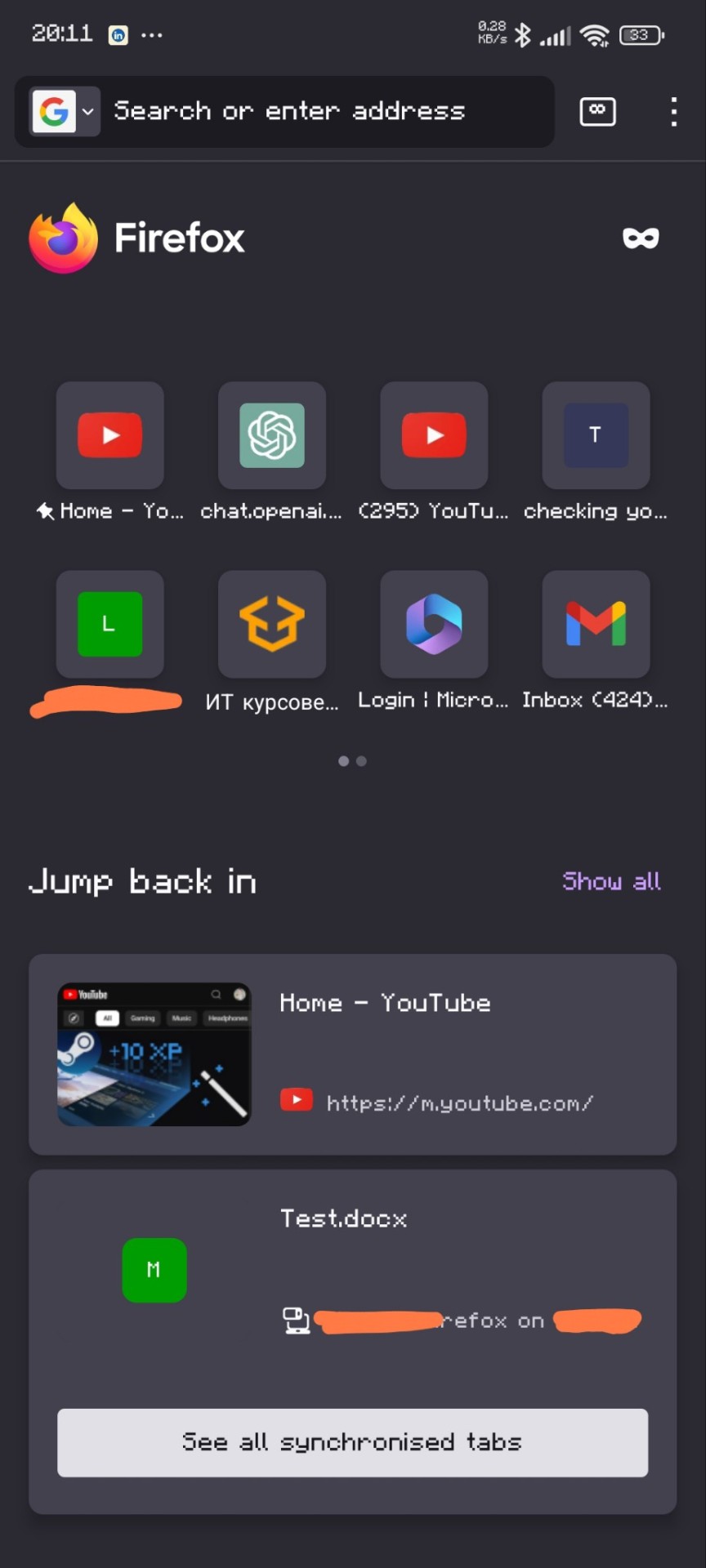
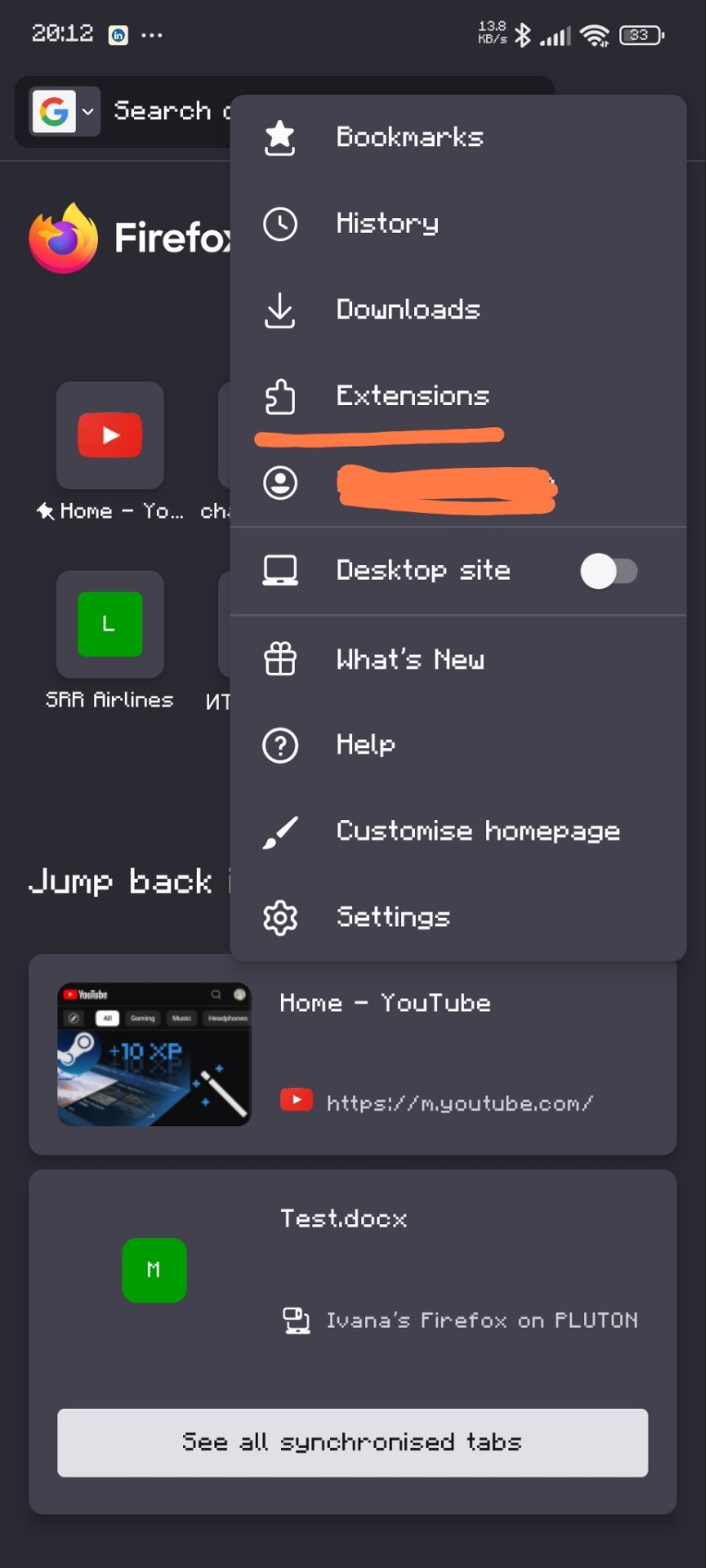

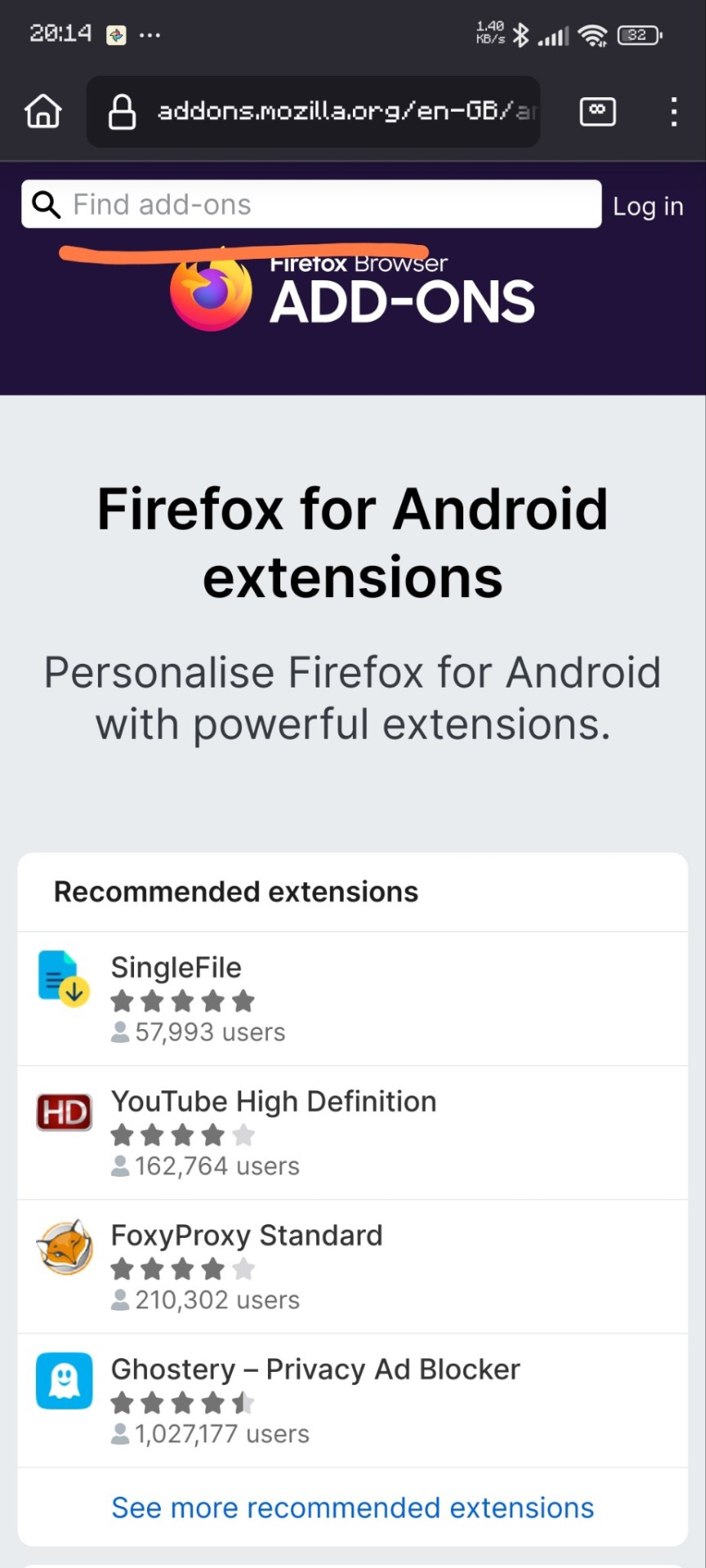
Here are the extensions I have
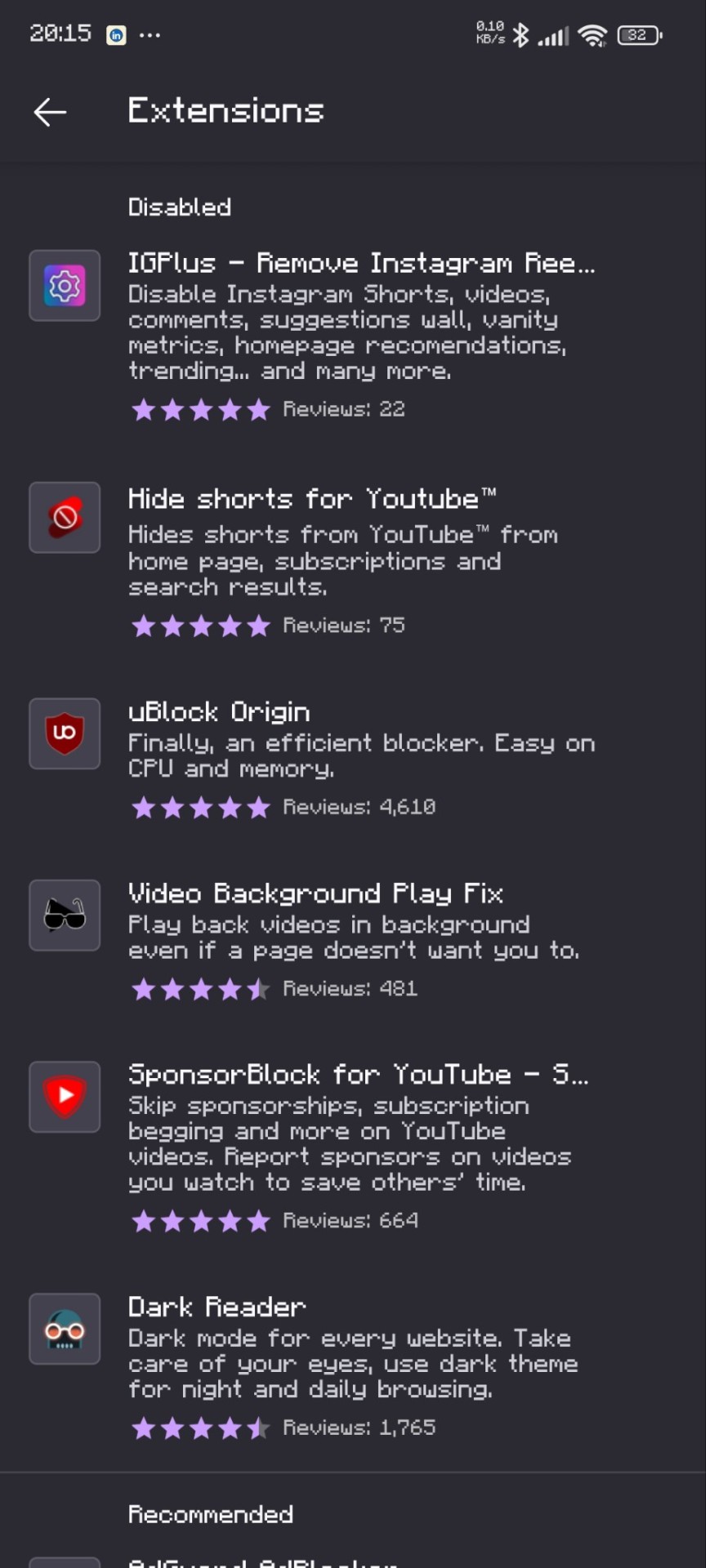
Not all of these are necessary, this is just my setup. Firefox is my default browser so i use other stuff too.
That's it! Here are some before and afters:
YouTube
Before:


After:


(thank you matpat for the perfect video for this lol)
Instagram
After:
(I'm out of pics per post so only the after)

Hopefully I've managed to be of help. I'll answer any questions that you may have!
Oh, and if you guys want I can give a shorter tutorial on how to add a shortcut to these sites to your home screen.
#adblock#instagram#youtube#life hacks#no ads#shorts#instagram reels#reels#not sponsored#quality of life#adhd hacks#ig lol#online tutoring#tutorial#firefox#advice#advise#reblog to save a life
17 notes
·
View notes
Text
Udaan by InAmigos Foundation: Elevating Women, Empowering Futures

In the rapidly evolving socio-economic landscape of India, millions of women remain underserved by mainstream development efforts—not due to a lack of talent, but a lack of access. In response, Project Udaan, a flagship initiative by the InAmigos Foundation, emerges not merely as a program, but as a model of scalable women's empowerment.
Udaan—meaning “flight” in Hindi—represents the aspirations of rural and semi-urban women striving to break free from intergenerational limitations. By engineering opportunity and integrating sustainable socio-technical models, Udaan transforms potential into productivity and promise into progress.
Mission: Creating the Blueprint for Women’s Self-Reliance
At its core, Project Udaan seeks to:
Empower women with industry-aligned, income-generating skills
Foster micro-entrepreneurship rooted in local demand and resources
Facilitate financial and digital inclusion
Strengthen leadership, health, and rights-based awareness
Embed resilience through holistic community engagement
Each intervention is data-informed, impact-monitored, and custom-built for long-term sustainability—a hallmark of InAmigos Foundation’s field-tested grassroots methodology.
A Multi-Layered Model for Empowerment

Project Udaan is built upon a structured architecture that integrates training, enterprise, and technology to ensure sustainable outcomes. This model moves beyond skill development into livelihood generation and measurable socio-economic change.
1. Skill Development Infrastructure
The first layer of Udaan is a robust skill development framework that delivers localized, employment-focused education. Training modules are modular, scalable, and aligned with the socio-economic profiles of the target communities.
Core domains include:
Digital Literacy: Basic computing, mobile internet use, app navigation, and digital payment systems
Tailoring and Textile Production: Pattern making, machine stitching, finishing techniques, and indigenous craft techniques
Food Processing and Packaging: Pickle-making, spice grinding, home-based snack units, sustainable packaging
Salon and Beauty Skills: Basic grooming, hygiene standards, customer interaction, and hygiene protocols
Financial Literacy and Budgeting: Saving schemes, credit access, banking interfaces, micro-investments
Communication and Self-Presentation: Workplace confidence, customer handling, local language fluency
2. Microenterprise Enablement and Livelihood Incubation
To ensure that learning transitions into economic self-reliance, Udaan incorporates a post-training enterprise enablement process. It identifies local market demand and builds backward linkages to equip women to launch sustainable businesses.
The support ecosystem includes:
Access to seed capital via self-help group (SHG) networks, microfinance partners, and NGO grants
Distribution of startup kits such as sewing machines, kitchen equipment, or salon tools
Digital onboarding support for online marketplaces such as Amazon Saheli, Flipkart Samarth, and Meesho
Offline retail support through tie-ups with local haats, trade exhibitions, and cooperative stores
Licensing and certification where applicable for food safety or textile quality standards
3. Tech-Driven Monitoring and Impact Tracking
Transparency and precision are fundamental to Udaan’s growth. InAmigos Foundation employs its in-house Tech4Change platform to manage operations, monitor performance, and scale the intervention scientifically.
The platform allows:
Real-time monitoring of attendance, skill mastery, and certification via QR codes and mobile tracking
Impact evaluation using household income change, asset ownership, and healthcare uptake metrics
GIS-based mapping of intervention zones and visualization of under-reached areas
Predictive modeling through AI to identify at-risk participants and suggest personalized intervention strategies
Human-Centered, Community-Rooted
Empowerment is not merely a process of economic inclusion—it is a cultural and psychological shift. Project Udaan incorporates gender-sensitive design and community-first outreach to create lasting change.
Key interventions include:
Strengthening of SHG structures and women-led federations to serve as peer mentors
Family sensitization programs targeting male allies—fathers, husbands, brothers—to reduce resistance and build trust
Legal and rights-based awareness campaigns focused on menstrual hygiene, reproductive health, domestic violence laws, and maternal care
Measured Impact and Proven Scalability
Project Udaan has consistently delivered quantifiable outcomes at the grassroots level. As of the latest cycle:
Over 900 women have completed intensive training programs across 60 villages and 4 districts
Nearly 70 percent of participating women reported an average income increase of 30 to 60 percent within 9 months of program completion
420+ micro-enterprises have been launched, 180 of which are now self-sustaining and generating employment for others
More than 5,000 indirect beneficiaries—including children, elderly dependents, and second-generation SHG members—have experienced improved access to nutrition, education, and mobility
Over 20 institutional partnerships and corporate CSR collaborations have supported infrastructure, curriculum design, and digital enablement.
Partnership Opportunities: Driving Collective Impact
The InAmigos Foundation invites corporations, philanthropic institutions, and ecosystem enablers to co-create impact through structured partnerships.
Opportunities include:
Funding the establishment of skill hubs in high-need regions
Supporting enterprise starter kits and training batches through CSR allocations
Mentoring women entrepreneurs via employee volunteering and capacity-building workshops
Co-hosting exhibitions, market linkages, and rural entrepreneurship fairs
Enabling long-term research and impact analytics for policy influence
These partnerships offer direct ESG alignment, brand elevation, and access to inclusive value chains while contributing to a model that demonstrably works.
What Makes Project Udaan Unique?

Unlike one-size-fits-all skilling programs, Project Udaan is rooted in real-world constraints and community aspirations. It succeeds because it combines:
Skill training aligned with current and emerging market demand
Income-first design that integrates microenterprise creation and financial access
Localized community ownership that ensures sustainability and adoption
Tech-enabled operations that ensure transparency and iterative learning
Holistic empowerment encompassing economic, social, and psychological dimensions
By balancing professional training with emotional transformation and economic opportunity, Udaan represents a new blueprint for inclusive growth.
From Promise to Power
Project Udaan, driven by the InAmigos Foundation, proves that when equipped with tools, trust, and training, rural and semi-urban women are capable of becoming not just contributors, but catalysts for socio-economic renewal.
They don’t merely escape poverty—they design their own systems of progress. They don’t just participate—they lead.
Each sewing machine, digital training module, or microloan is not a transaction—it is a declaration of possibility.
This is not charity. This is infrastructure. This is equity, by design.
Udaan is not just a program. It is a platform for a new India.
For partnership inquiries, CSR collaborations, and donation pathways, contact: www.inamigosfoundation.org/Udaan Email: [email protected]
3 notes
·
View notes
Text
#application testing#agile testing#validation testing#ai automation testing#software testing#Performance Testing#web application testing#mobile application testing
0 notes
Text
Thailand SMART Visa
1.1 Statutory Foundations
Established under Royal Decree on SMART Visa B.E. 2561 (2018)
Amended by Ministerial Regulation No. 377 (2021) expanding eligible sectors
Operates within Thailand 4.0 Economic Model under BOI oversight
1.2 Governance Structure
Primary Authority: Board of Investment (BOI)
Interagency Coordination:
Immigration Bureau (visa issuance)
Digital Economy Promotion Agency (tech qualifications)
Ministry of Higher Education (academic validation)
Technical Review Committees:
12 sector-specific panels
Investment verification unit
2. Eligibility Criteria & Qualification Pathways
2.1 SMART-T (Experts)
Compensation Thresholds
Base Salary: Minimum THB 200,000/month (USD 5,800)
Alternative Compensation:
Equity valued at 25% premium
Performance bonuses (capped at 40% of base)
2.2 SMART-E (Entrepreneurs)
Startup Metrics
Revenue Test: THB 10M+ ARR
Traction Test: 50,000 MAU
Funding Test: Series A (THB 25M+)
Accelerator Requirements:
DEPA-certified programs
Minimum 6-month incubation
3. Application Process & Technical Review
3.1 Document Authentication Protocol
Educational Credentials:
WES/IQAS evaluation for foreign degrees
Notarized Thai translations (MFA-certified)
Employment Verification:
Social security cross-check
Three professional references
3.2 Biometric Enrollment
Facial Recognition: 12-point capture system
Fingerprinting: 10-print electronic submission
Iris Scanning: Optional for Diamond tier
4. Privilege Structure & Compliance
4.1 Employment Rights Framework
Permitted Activities:
Primary employment (≥80% time)
Academic collaboration (≤20%)
Advisory roles (max 2 concurrent)
Restrictions:
Local employment outside specialty
Political activities
Unapproved commercial research
4.2 Dependent Provisions
Spousal Work Rights:
General employment permitted
No industry restrictions
Child Education:
25% tuition subsidy
University admission priority
4.3 Mobility Features
Airport Processing:
Dedicated SMART lanes at 6 airports
15-minute clearance guarantee
Re-entry Flexibility:
Unlimited exits
72-hour grace period
5. Sector-Specific Implementations
5.1 Biotechnology
Special Privileges:
Lab equipment duty waivers
Fast-track FDA approval
50% R&D tax deduction
5.2 Advanced Manufacturing
Incentives:
Robotics import tax exemption
Industrial land lease discounts
THB 500K training subsidy
5.3 Digital Infrastructure
Cloud Computing:
VAT exemption on services
30% energy cost reduction
Cybersecurity:
Liability protections
Gov't certification fast-track
6. Compliance & Monitoring
6.1 Continuous Reporting
Quarterly:
Employment verification
Investment maintenance
Annual:
Contribution assessment
Salary benchmarking
6.2 Renewal Process
Documentation:
Updated financials
Health insurance (USD 100K)
Performance metrics
Fees:
THB 10,000 renewal
THB 1,900 visa stamp
7. Emerging Developments
71 2024 Enhancements
Blockchain Specialist Category
Climate Tech Fast-Track
EEC Regional Expansion
7.2 Pending Reforms
Dual Intent Provision
Skills Transfer Mandate
Global Talent Pool
8. Strategic Application Approach
8.1 Pre-Submission Optimization
Compensation Restructuring
Patent Portfolio Development
Professional Endorsements
8.2 Post-Approval Planning
Tax Residence Strategy
Asset Protection
Succession Planning
9. Risk Management
9.1 Common Rejection Reasons
Document Issues (32%)
Qualification Gaps (28%)
Financial Irregularities (19%)
9.2 Operational Challenges
Banking Restrictions
Healthcare Access
Cultural Integration
#thailand#immigration#thai#thaiimmigration#thaivisa#visa#immigrationlawyers#immigrationinthailand#thailandsmartvisa#smartvisa#smartvisainthailand#thaismartvisa
2 notes
·
View notes